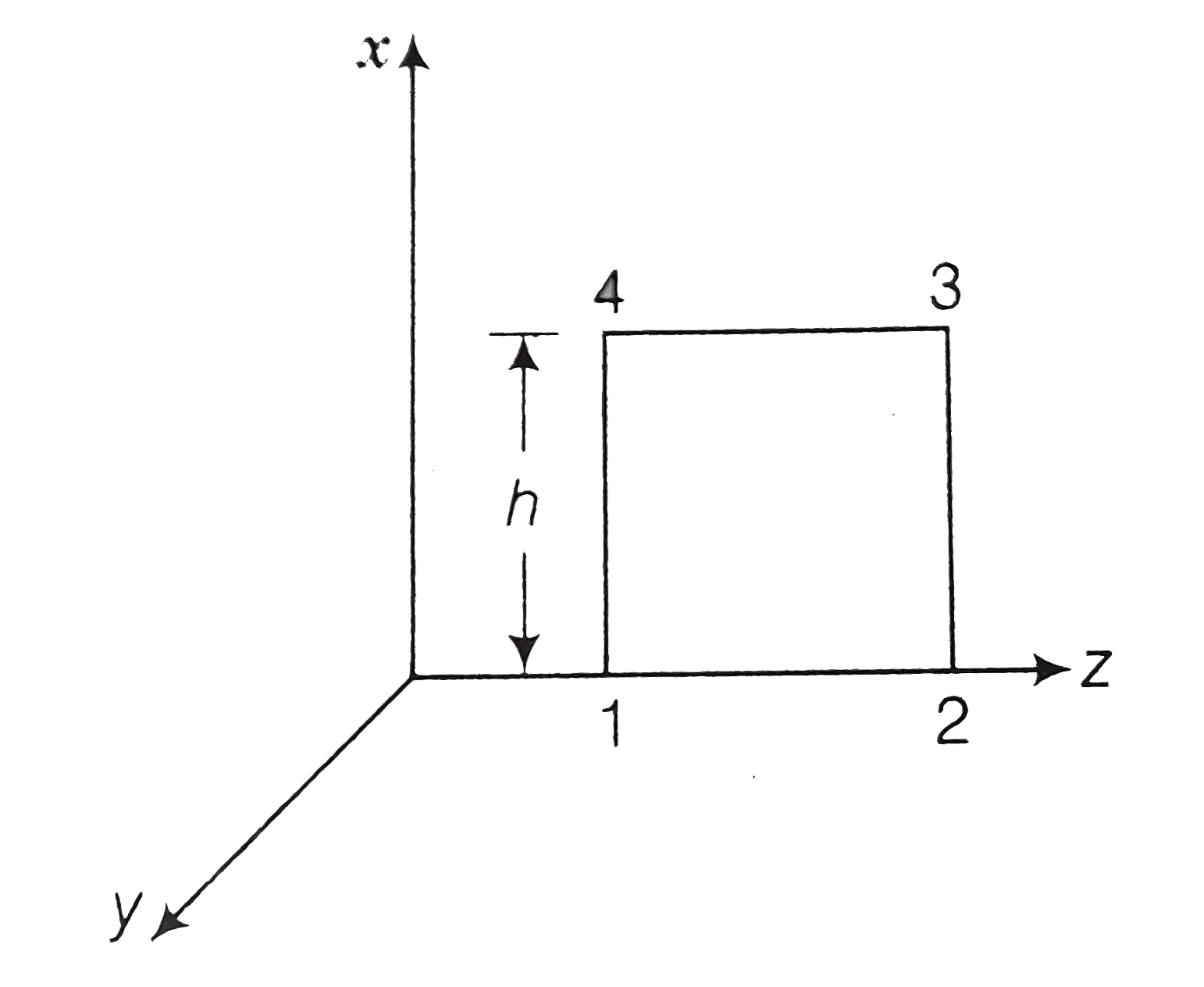Dimensions of ε0dϕEdt are same as that of
charge
potential
capacitance
current
The correct Answer is:D
To find the dimensions of the expression ϵ0dΦEdt, we will break it down step by step.
Step 1: Understand the terms involved
- ϵ0 is the permittivity of free space.
- ΦE is the electric flux.
- dΦEdt represents the rate of change of electric flux with respect to time.
Step 2: Find the dimensions of ϵ0
The permittivity of free space ϵ0 has dimensions given by:
(ϵ0)=(C2)(N⋅m2)
Where:
- (C) is the dimension of charge.
- (N) (Newton) can be expressed as (kg⋅m/s2).
Thus, we can rewrite the dimensions of ϵ0:
(ϵ0)=(C2)(kg⋅m/s2)⋅(m2)=(C2)(kg⋅m3/s2)=(C2⋅s2/(kg⋅m3))
Step 3: Find the dimensions of electric flux ΦE
Electric flux ΦE is defined as:
ΦE=E⋅A
Where:
- E is the electric field with dimensions (E)=(V)(m)=(J/C)(m)=(kg⋅m2/(s2⋅C))(m)=(kg⋅m)(s2⋅C).
- A is the area with dimensions (A)=(m2).
Thus, the dimensions of electric flux ΦE are:
(ΦE)=(E)⋅(A)=((kg⋅m)(s2⋅C))⋅(m2)=(kg⋅m3)(s2⋅C)
Step 4: Find the dimensions of dΦEdt
The rate of change of electric flux with respect to time has dimensions:
(dΦEdt)=(ΦE)(T)=(kg⋅m3/(s2⋅C))(s)=(kg⋅m3)(s3⋅C)
Step 5: Combine the dimensions
Now we can find the dimensions of the entire expression ϵ0dΦEdt:
(ϵ0dΦEdt)=(ϵ0)⋅(dΦEdt)
Substituting the dimensions we found:
=(C2⋅s2kg⋅m3)⋅(kg⋅m3s3⋅C)
When we multiply these, we get:
=C2⋅s2⋅kg⋅m3kg⋅m3⋅s3⋅C=C⋅s2s3=Cs=(I)
Where (I) is the dimension of electric current (Ampere).
Final Answer
The dimensions of ϵ0dΦEdt are the same as that of electric current, which is (I).
- ϵ0 is the permittivity of free space.
- ΦE is the electric flux.
- dΦEdt represents the rate of change of electric flux with respect to time.
The permittivity of free space ϵ0 has dimensions given by:
(ϵ0)=(C2)(N⋅m2)
Where:
- (C) is the dimension of charge.
- (N) (Newton) can be expressed as (kg⋅m/s2).
(ϵ0)=(C2)(kg⋅m/s2)⋅(m2)=(C2)(kg⋅m3/s2)=(C2⋅s2/(kg⋅m3))
Electric flux ΦE is defined as:
ΦE=E⋅A
Where:
- E is the electric field with dimensions (E)=(V)(m)=(J/C)(m)=(kg⋅m2/(s2⋅C))(m)=(kg⋅m)(s2⋅C).
- A is the area with dimensions (A)=(m2).
(ΦE)=(E)⋅(A)=((kg⋅m)(s2⋅C))⋅(m2)=(kg⋅m3)(s2⋅C)
The rate of change of electric flux with respect to time has dimensions:
(dΦEdt)=(ΦE)(T)=(kg⋅m3/(s2⋅C))(s)=(kg⋅m3)(s3⋅C)
Now we can find the dimensions of the entire expression ϵ0dΦEdt:
(ϵ0dΦEdt)=(ϵ0)⋅(dΦEdt)
Substituting the dimensions we found:
=(C2⋅s2kg⋅m3)⋅(kg⋅m3s3⋅C)
When we multiply these, we get:
=C2⋅s2⋅kg⋅m3kg⋅m3⋅s3⋅C=C⋅s2s3=Cs=(I)
Where (I) is the dimension of electric current (Ampere).
The dimensions of ϵ0dΦEdt are the same as that of electric current, which is (I).
Topper's Solved these Questions
Similar Questions
Knowledge Check
Dimensions of ε0dϕEdt are same as that of
A[AT]B[A]C[ML2T−2]D[ML−1T−2]The dimension of ε0dϕEdt is same as the dimension of
AchargeBcapacitanceCpotentialDcurrentIf E = energy , G= gravitational constant, I=impulse and M=mass, then dimensions of GIM2E2 are same as that of
AtimeBmassClengthDforce
A plane EM wave travelling in vacuum along z-direction is given by E=E0 sin (kz−ωt)ˆi and B=B0 sin (kz−ωt)ˆj
(i) Evaluate ∫E.dl over the rectangular loop 1234 shown in figure.
(ii) Evaluate ∫B.ds over the surface bounded by loop 1234.
(iii) Use equation ∫E.dl=−dϕBdt to prove E0B0=c.
(iv) By using similar proces and the equation
∫B.dl=μ0I+ε0dϕEdt, prove that c1√μ0ε0

View SolutionIf E = energy , G= gravitational constant, I=impulse and M=mass, then dimensions of GIM2E2 are same as that of
View SolutionThe dimensions of velocity gradient are the same as that of
View SolutionThe dimension of 1√μ0ε0 are same as
View SolutionThe maxwell’s equation :
∮→B.→dl=μ0(i+ɛ0.dϕEdt) is a statement of -
View Solution

